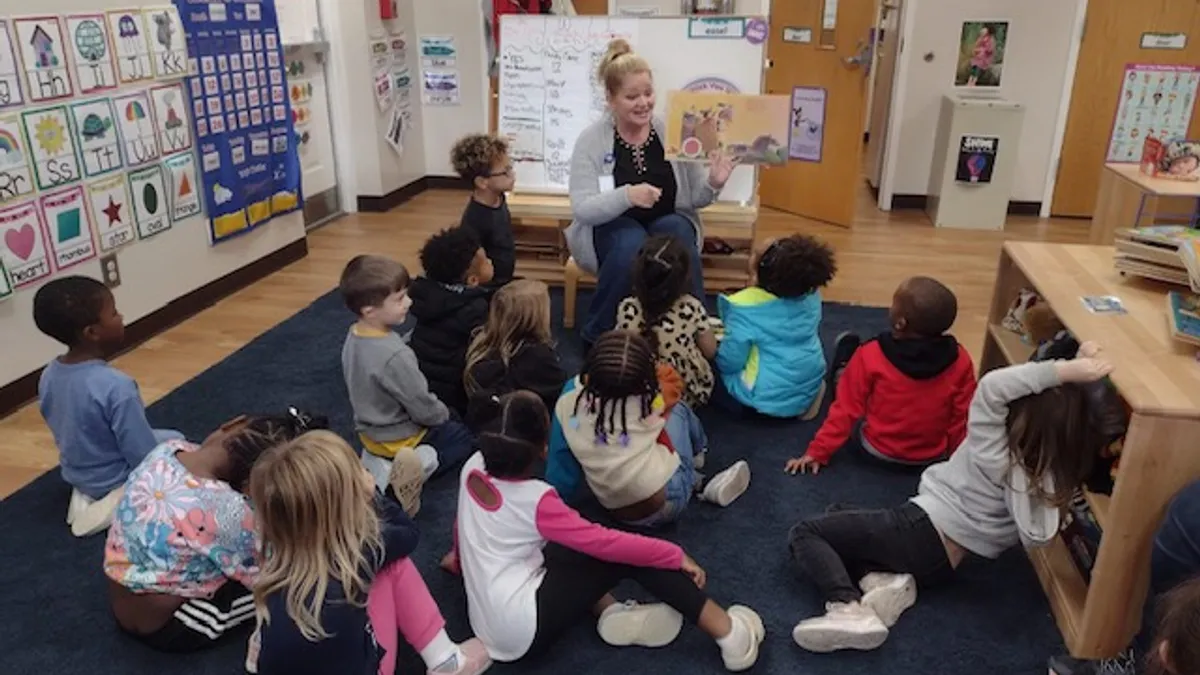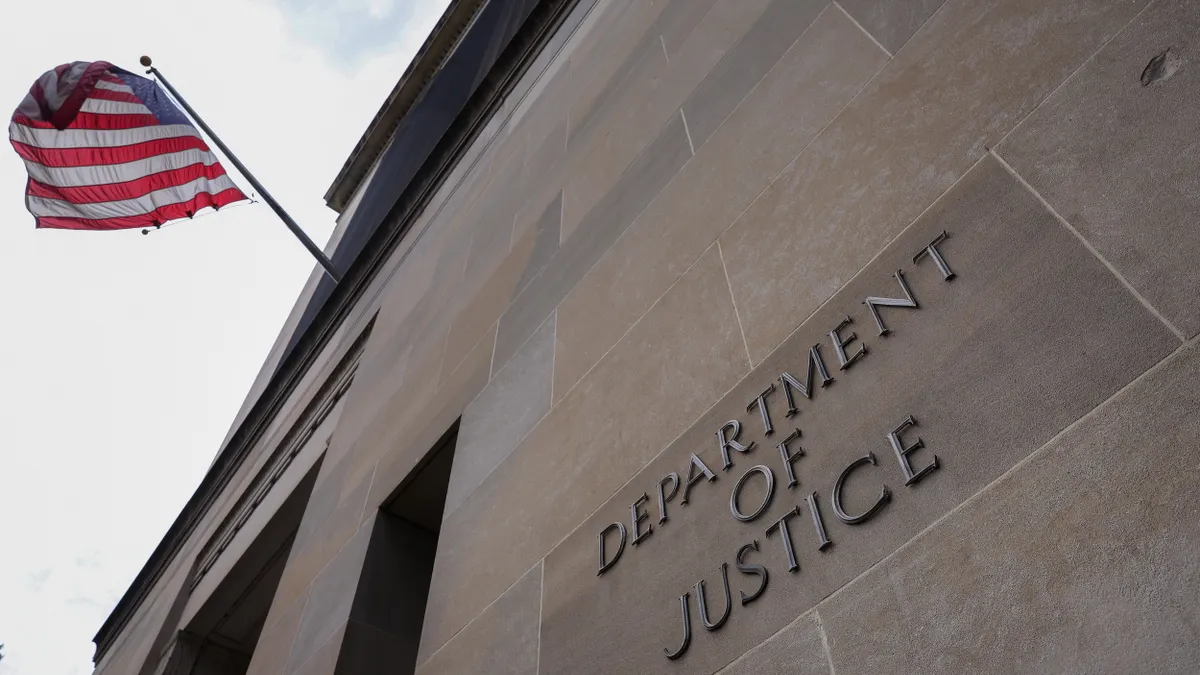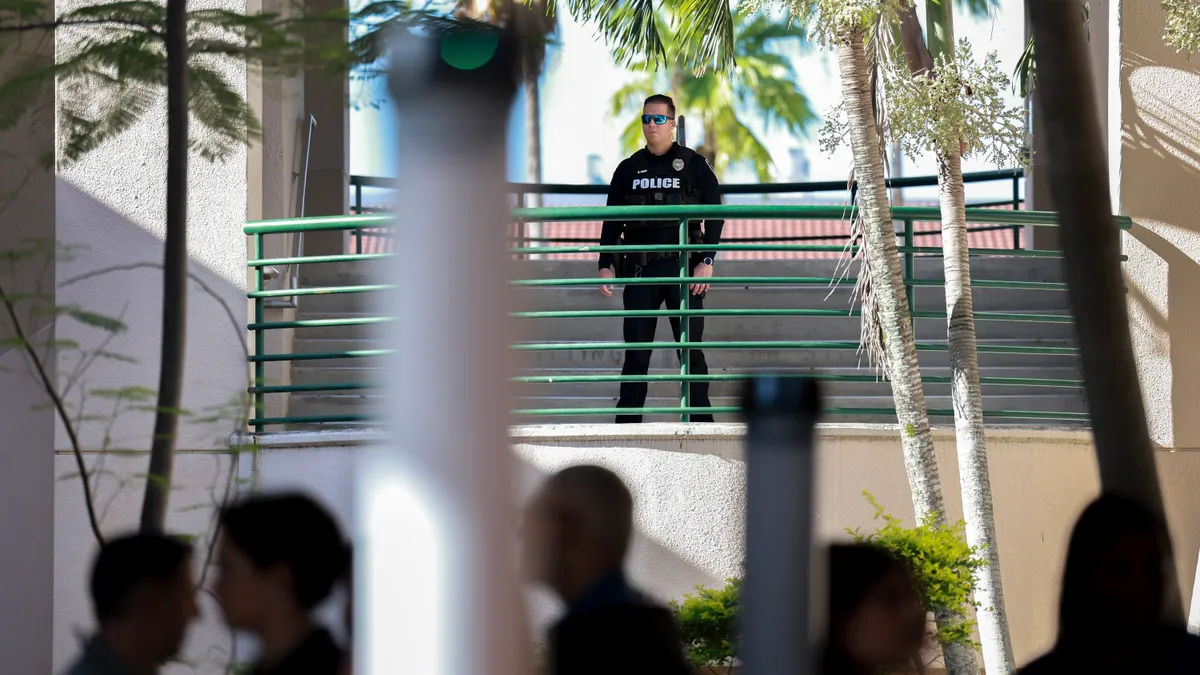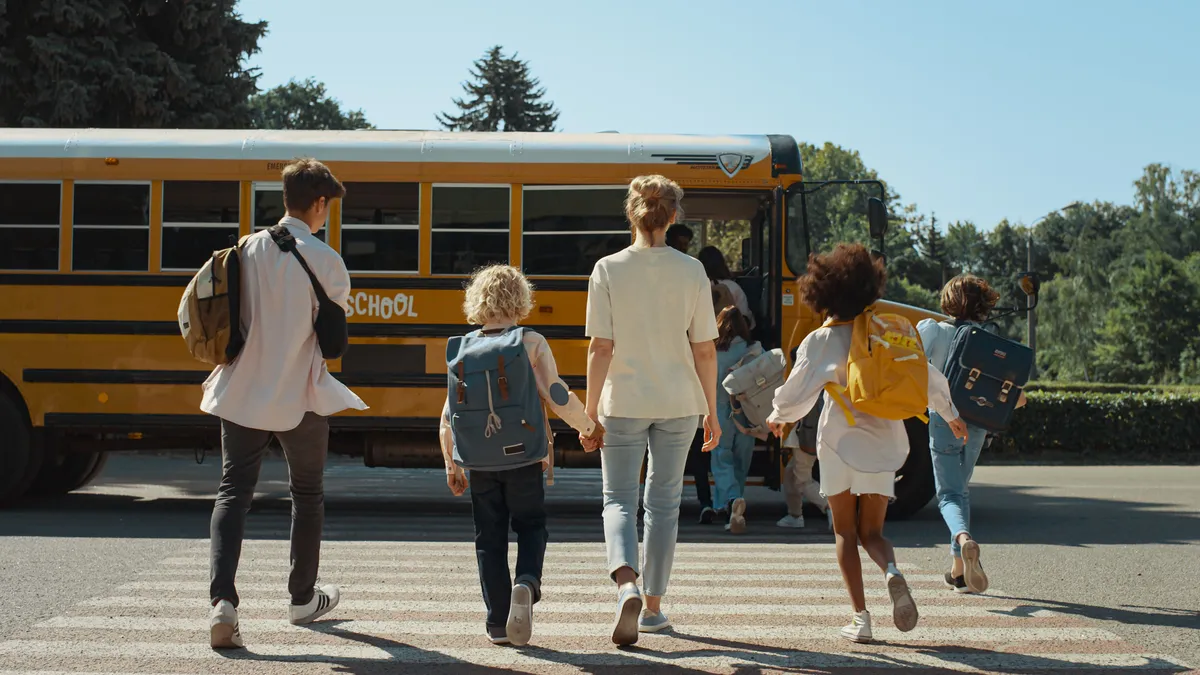Since the start of the school year at Thornwell Childhood Development Center in South Carolina, there has not been a day without staff or student absences due to illnesses. In fact, during some periods over the fall, Director Jenn Adams grew concerned the center would need to close temporarily because so many staff were sick.
The center stayed open, but it was a daily challenge. At one point, a class of 20 young students had 16 students and both teachers out.
"It's definitely made for a very challenging time," said Adams, who has filled in for teachers during absences.
As the "tripledemic" of the flu, COVID-19 and respiratory syncytial virus, known as RSV — along with as high rates of other illnesses such as strep throat and lingering or recurring colds — puts stress on early education centers and K-12 schools, administrators have had to adjust school operations in a constant battle to keep in-person learning going.
"Our philosophy is if we can keep the building open, we will," said Nathaniel "Natty" Messick, principal of Fertile-Beltrami School in Minnesota, a 550-student pre-K-12 school.
Schools across the nation this fall made adjustments in response to soaring illness. They've reintroduced COVID-19-era safety and cleaning protocols, increased school-to-home communications about when and when not to send students to school, made staffing modifications, and prepared staff and students for virtual learning when buildings — and even school districts — need to shut down temporarily to contain illness outbreaks.
USD 420 School Closure Due to Illness
— USD420 Osage City Schools (@USD420SCHOOLS) December 13, 2022
Osage City Schools will be closed for the remainder of the semester starting Wed, Dec. 14 due to a high number of absences. Today, over 40% of the student population was absent due to illness. See you January 3rd. pic.twitter.com/XYHuFeMq2X
In many cases, the decision to change operations is based on weighing the pros and cons of each alternative. For instance, even though Thornwell this year carried over a pandemic practice of cohorting its young students by limiting the mingling of separate classes to prevent wider spread of illnesses, it has still opened the school to parent visitors.
"For us, the positive is just making those connections and forming those bonds again with the families," Adams said.
Keeping the school doors open
Overton Public School in Nebraska has not had a major flu, RSV or COVID-19 outbreak this fall, but has seen higher rates of students having multiple colds and those colds lingering longer than usual, said Principal Brian Fleischman, Nebraska's 2022 Principal of the Year.
A neighboring district, however, is just starting to see an increase in flu cases. "Our time is coming," said Fleischman. Even as he calculates that a potential increase in local COVID-19 cases would come while staff and students are on winter break, he voiced disappointment that illness could disrupt families' time together.

The school's approach all fall has been to make small changes to proactively ward off any spread of germs so the school, which has 280 students in pre-K through 12th grade, could stay open.
Efforts to clean and sanitize have increased. The school removed all of its water fountains with spouts and provided every student with a refillable water bottle. The district also gave winter coats to students who needed them and reminded others to bundle up when it's cold.
"I think being a smaller district, that gives us some advantage to do some of those things," Fleischman said.
At the Fertile-Beltrami School, student illnesses have been mostly due to the flu, Messick said. The school has not had to close, but when more than 5% of the student body was out with the flu for several days before the Thanksgiving break, the school had to report that to the Minnesota Department of Health.
Messick, Minnesota's 2022 Principal of the Year, said the school is fortunate to work with 11 certified substitute teachers who can fill in when teachers are absent. A few work almost daily in the school and have helped ensure continuity of learning.
School administrators say keeping school open to in-person learning is essential as educators strive to improve academic and developmental setbacks from the pandemic.
For the 130-student Thornwell early education center, which serves infants through 5-year-olds, too many staff absences can cause the school to run afoul of rules for operating. To keep and recruit early educators, the school offers $5-$7 more per hour than other local businesses. But a newly built gas station in town will increase competition for staff, Adams said.
The early education center is also experiencing sharp increases in costs for cleaning supplies. For instance, a case of disposable gloves that used to be $25 is now $100. Since the school serves children from low-income communities, those costs can't be passed down to parents, Adams said.
Communication with staff and families
Schools typically have policies that spell out when students should stay home, be it a certain level of fever or other symptoms, and when they are allowed to come back to school after they are fever- or symptom-free.
But communicating that can be difficult if school policy conflicts with doctors' advice or parents' opinions.
"It is a balance of you don't want kids who are feverish and contagious coming to school, but you also don't want kids staying home too long, because then they're missing school if they're better," Fleischman said.
"When it comes to illnesses right now and getting kids back in the building or keeping them in the building, I just think it's even more paramount that communication is very prevalent and very upfront with people," he said.
Fleischman said he allows students who are well enough to be at school, but who may still feel run down after battling a cold, to lay down in the nurse's office or his office if they need to recharge. "If your fever is gone, you feel good enough to come, come to school. Let's do what we can," he said.
"For the most part, I think we've learned as a nation that kids do a lot better when they're in school. So the more that we can do to keep kids healthy and keep the doors open, the better."

Nathaniel "Natty" Messick
Principal of Fertile-Beltrami School in Minnesota
Hedy Chang, founder and executive director of Attendance Works, said preliminary data shows chronic absenteeism rates are remaining high this school year.
Schools should be intentional about helping students get back into the routine of school when they are not ill, Chang said. And if students need to stay home because they are sick, there should be ways they can stay up-to-date on assignments and socially connected to the school.
"How do they access learning? How do they make sure that they don't fall so far behind that they can't catch up? And how do they stay connected to their peers and classroom teachers? And this is where I think we learned things during COVID," she said.
One health protocol Thornwell implemented has received some parent pushback. When an ill student is sent home, if that student's sibling also attends Thornwell, they too must stay home until everyone is better.
In those cases, Adams speaks with parents and tells them, "We are just trying to mitigate keeping our center as germ-free as possible, because we know you need us to be open."
Applying lessons learned during COVID-19
School administrators say many response skills learned during the pandemic have helped with managing a chaotic illness season. For example, school leaders are staying in touch with local health departments and educators in neighboring districts about public health concerns.
They're also finding more approaches to keep students and staff healthy. At Thornwell, a new refrigerator-size ozone sanitizing machine can disinfect soft materials, crayons, markers and other items in about 30 minutes. Although it requires effort for teachers to gather the items for cleaning several times a week, it has helped make classrooms safer for the young students, Adams said.
"As precious as children are, they're literal little walking germ balls."
But as difficult as the fall has been, there's been much joy in having a more normal routine when compared to COVID-19 shutdowns, the administrators said.
"So much of COVID was about isolation — isolation and, you know, children are meant to interact with one another and with our teachers," Adams said.
Messick also said the knowledge gained during the pandemic about how viruses spread and how to mitigate illness has helped his school stay proactive this fall.
"For the most part, I think we've learned as a nation that kids do a lot better when they're in school," Messick said. "So the more that we can do to keep kids healthy and keep the doors open, the better."




















